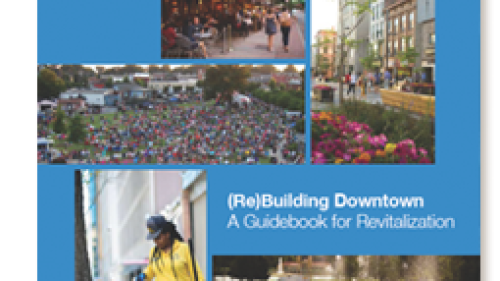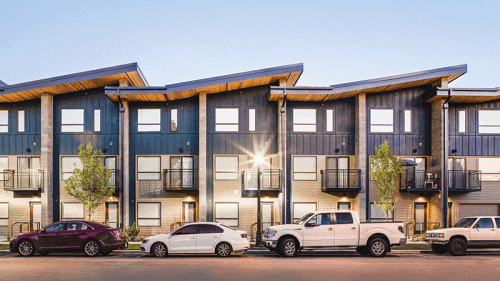Property Types
Hotels and Resorts
“As the recovery in the industry strengthens, hotels have become an attractive sector,” says ULI’s Hotel Development Council chair. But parties entering the hospitality industry should study it carefully, says the owner of Hotel Granduca, which recently posted its highest occupancy ever. Read what other industry insiders are saying about doing business in this sector during the economic recovery.
2010 ended on a strong note with all-in 10-year mortgage spreads in 5.25%+/- range which should have proved attractive to all but the most jaded investors. But as they say, it’s still “early days” and few lenders have announced plans and targets for 2011.
This week’s Monday’s Numbers should be subtitled: “Credit Suisse Group Sells $2.8 Billion European Commercial Property Loan Portfolio for $1.2 Billion”
Industrial
The Commercial Mortgage Alert Trepp weekly survey of 15 active portfolio lenders was unchanged. There seems to be an all-in cost of 5.0% “glass ceiling” in place. For the survey period, average all-in cost equaled 4.80 percent.
The Commercial Mortgage Alert Trepp weekly survey of 15 active portfolio lenders narrowed slightly in response to widening in the yield of 10-year Treasury bonds. There seems to be an all-in cost of 5.0% “glass ceiling” in place as loan spreads moved in and Treasury spreads widened to accommodate changes in spreads and/or yields. For the survey period, average all-in cost equaled 4.87 percent.
The Commercial Mortgage Alert Trepp weekly survey of 15 active portfolio lenders narrowed significantly (17 basis points on average) with multifamily spreads breaking the 200 basis point barrier between sanity and complete madness. Less than 200 over the 10-year curve seems a little too low a spread to compensate for the risks associated with making a loan secured by an operating business. During the period, 10-year Treasury bond yields were flat, with average all-in cost equal to 4.66 percent.
Mixed-Use
When Alex Morrison, executive director of the Urban Development Authority for Macon-Bibb County, Georgia, started on a comprehensive plan for downtown revitalization, “we knew we wanted walkability and housing,” he said. “But the how and where [were] driven by the public process.” His emphasis on community engagement drove home a point in a new guidebook, (Re)Building Downtown: A Guidebook for Revitalization, from Smart Growth America.
In a unique collaboration, the American Museum of Natural History brings its traveling exhibits to a new development in Overland Park, Kansas.
Hushan North Bund transforms a former commercial dock into a vibrant mixed-use development.
Multifamily
A member of ULI Los Angeles shares how his company is harnessing creativity and a lot of hard work to build attainable housing that is within reach of most renters.
Repurposing commercial properties into multifamily housing is growing more common across a variety of real estate markets and can provide a critical source of housing where shortages persist, according to a new report from ULI and the National Multifamily Housing Council Research Foundation.
Ten projects leverage public and private resources to realize complex new developments.
Office
Office workers across the Asia Pacific region are returning to the office at varying paces, taking into consideration government directives and company policies. Though the permanent impact of remote working remains to be seen, landlords will need to innovate and adapt to a changed environment, said participants in ULI Asia Pacific’s latest FutuRE of Cities and Communities webinar.
Greening the workplace beyond the existing building code requirements requires both tenants and owners to prioritize investing in and tracking sustainability. Two panels of experts, one composed of tenant representatives and the other of property owner representatives, discussed their challenges and solutions at “Beyond Code for a Greener Bay Area: Owner and Tenant Solutions for Sustainable Buildouts,” an event organized by ULI San Francisco and ULI’s Tenant Energy Optimization Program.
A technology expert speaking at ULI Europe’s Real Estate Forum in Copenhagen in June described the evolving best practices for using sensors to enhance building management and tenant satisfaction.
Residental
Panelists at a ULI Boston event in April said that a newfound purpose for technology is emerging in multifamily segments—fostering a sense of community within the buildings and their surrounding neighborhoods.
High construction costs and low inventories are driving home prices ever higher in some of America’s fastest-growing cities, said panelists speaking at a recent ULI Colorado event.
According to a recent report from RCLCO, home sales at America’s 50 top-selling master-planned communities surpassed the 2016 totals by more than 17 percent last year. The Villages in Central Florida’s 2,231 sales puts them in the top spot again, while California’s Irvine Ranch, with sales of 1,814, comes in at second place, followed by Florida’s Lakewood Ranch, with 1,206 total sales.
Retail
For decades, civic leaders have tried to revitalize Market Street, San Francisco’s central thoroughfare, only to see their efforts founder. “I sometimes call it the great white whale of San Francisco,” says Eric Tao, managing partner at L37 Development in San Francisco and co-chair of ULI San Francisco. “Every new mayor, every new planning director, every new economic development director has chased that white whale.” This year, however, an international competition of ideas hosted and run by ULI San Francisco, with support from the ULI Foundation, generated fresh momentum for reimagining the boulevard. The competition drew 173 submissions from nine countries and sparked new conversations about the future of downtown San Francisco.
The OAK project began in 2009, when a development firm set their sights on the corner of Northwest Expressway and North Pennsylvania Avenue, the state’s most important and busiest retail intersection. As the region’s only parcel capable of supporting a vertically integrated project of this scale and density, that land represented an opportunity to create something truly special.
As aging retail continue to evolve, one increasingly popular trend has been to redesign malls as town centers—recalling a time when such commercial districts were the heart and soul of a community. Mall–to–town center retrofits are emerging throughout the nation, especially in suburban communities, where pedestrian-friendly, mixed-use environments are highly attractive to millennials now raising families.














